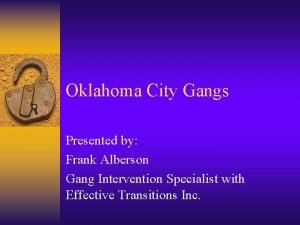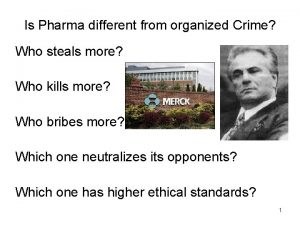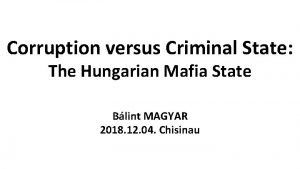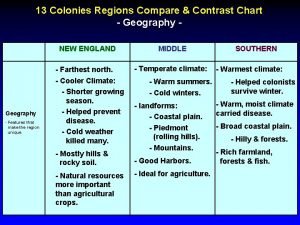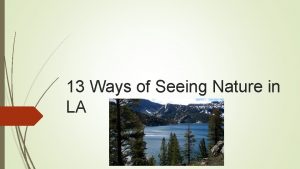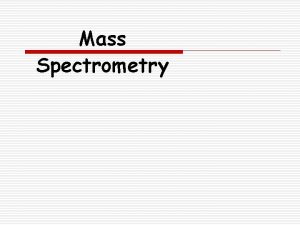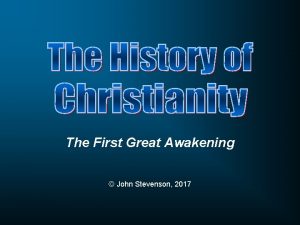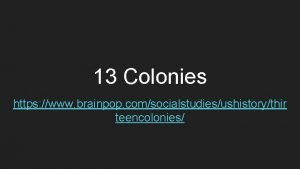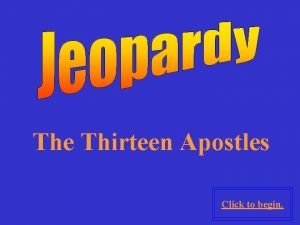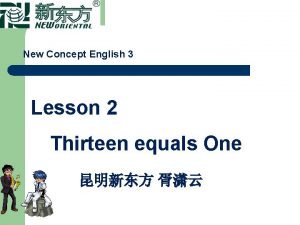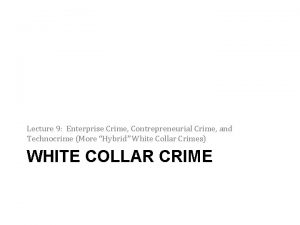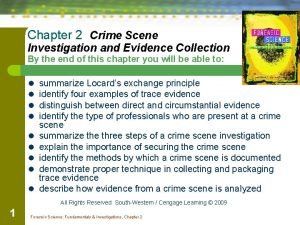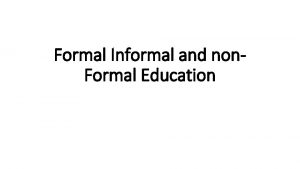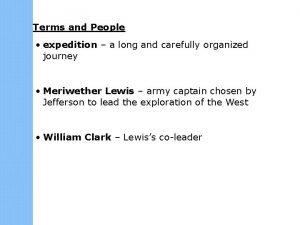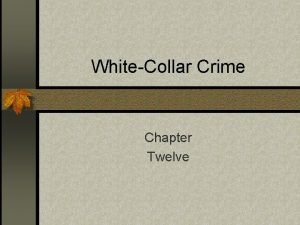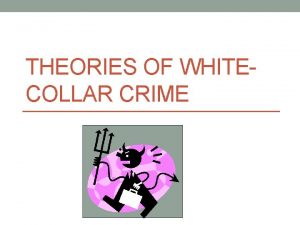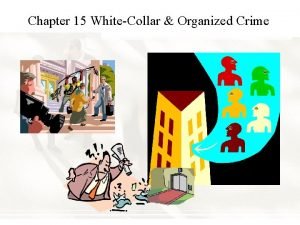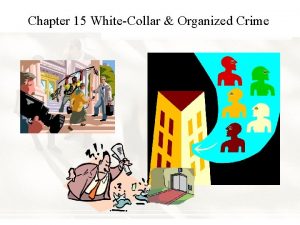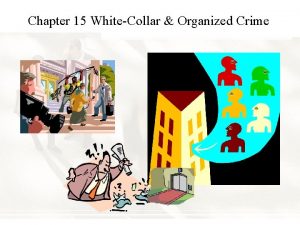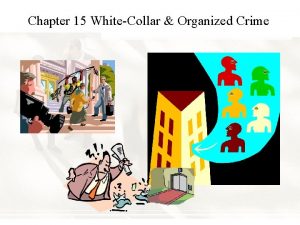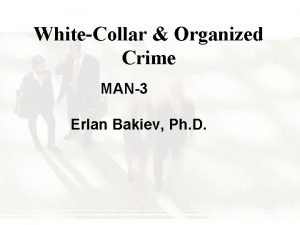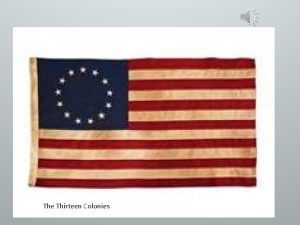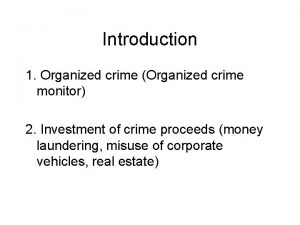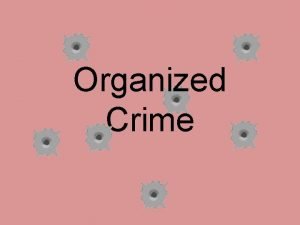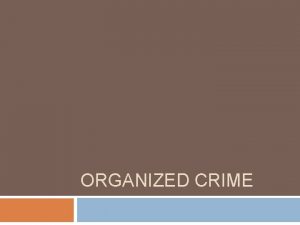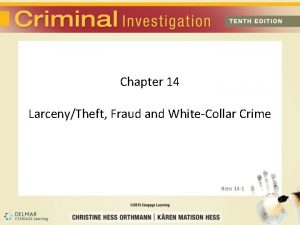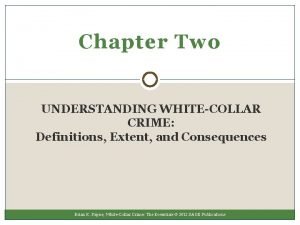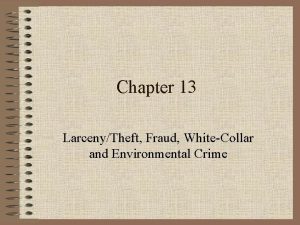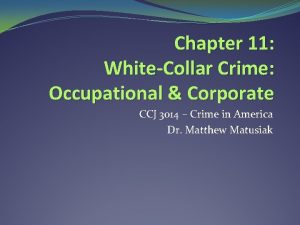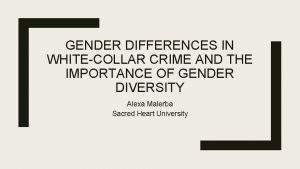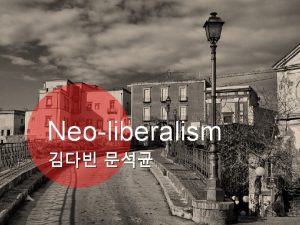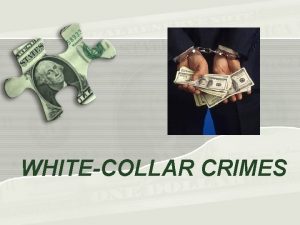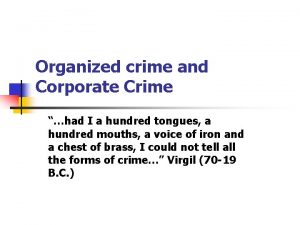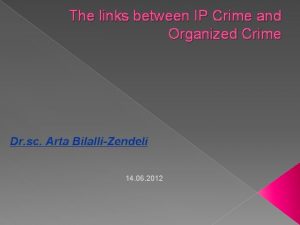Chapter Thirteen Enterprise Crime WhiteCollar Crime and Organized























- Slides: 23

Chapter Thirteen Enterprise Crime: White-Collar Crime and Organized Crime

Enterprise Crime l Involves illicit entrepreneurship and commerce l l l Can be divided into two distinct categories: l l l People twist the legal rules of commercial enterprise for criminal purposes Corrupts the free market system White-collar crime Organized crime Both forms can involve violence

White-Collar Crime l l Any business-related act that uses deceit, deception, or dishonesty to carry out criminal enterprise Involves illegal activities of people and institutions whose acknowledged purpose is illegal profit through legitimate business transactions In the past it was considered only corporate crime Now include middle-income Americans

Extent of White-Collar Crime l l Difficult to determine the true extent According to the White Collar Crime Center: l l About half of households have experienced at least one form of white collar victimization each year About 2/3 of all Americans will experience at least one white collar victimization in their life Most common white collar victimizations include pricing fraud, credit card fraud, directly affected by corporate fraud 2/3 of victims report the incident l 30% report to law enforcement agency

Components of White-Collar Crime l l l l Stings and swindles Chiseling Individual exploitation of institutional position Influence peddling and bribery Embezzlement and employee fraud Client fraud Corporate crime

Stings and Swindles l A white-collar crime in which people use their institutional or business position to trick others out of their money

Chiseling l l Using illegal means to cheat an organization, its consumers, or both, on a regular basis Examples: l l Professional chiseling Securities fraud

Influence Peddling and Bribery l l Using one’s institutional position to grant favors and sell information to which one’s co-conspirators are not entitled Occurs in government as well as business

Embezzlement and Employee Fraud l l l Use of one’s position to embezzle company funds or appropriate company property for themselves The company or organization is the victim Committed by both blue-collar workers and management

Client Fraud l l Theft by an economic client from an organization that advances credit to its clients or reimburses them for services rendered Examples: l l insurance fraud credit card fraud related to welfare or Medicare programs tax evasion

Corporate Crime l l When a powerful institution or its representatives violate the laws that restrain these institutions from doing social harm or require them to do social good Examples: l l price fixing illegal restraint of trade false advertising practices that violate environmental protection statutes

Causes of White-Collar Crime l l l Rational Choice/Greed Rational Choice/Need Rationalization/Neutralization Cultural Self-control

Rational Choice l Greed l l l Greedy people choose to take shortcuts to acquire wealth Most believe they will not get caught Need l Some people turn to crime to fulfill a financial or psychological need

Rationalization/Neutralization l Use of rationalizations by offenders to resolve the conflict experienced over engaging in illegal behavior

Corporate Culture l l l Some business organizations promote white collar criminality Place excessive demands on employees while maintaining a business climate tolerant of employee deviance Enron

Self-Control l l The motives for white-collar crimes are the same as for other criminal behaviors Offenders have low self-control and are inclined to follow momentary impulses without considering longterm consequences

White-Collar Law Enforcement Systems l The Federal government has the authority to regulate white-collar crime l l State and local agencies are now combating whitecollar crime too Controlling White-Collar Crime l l Compliance strategies l methods of controlling white-collar crime that rely on the threat of economic sanctions or civil penalties to control potential violators, creating a marketplace to obey the law Deterrence l detect criminal violations, determine responsibility, and penalize offenders to deter future violations

Organized Crime l l Illegal activities of people and organizations whose acknowledged purpose is profit through illegitimate business enterprise General characteristics l Conspiratorial activity l Continuous commitment of primary members l Economic gain is the primary goal (also power and status) l Not all activities are illicit l Use predatory tactics l Groups are quick and effective in controlling and disciplining l Not always the “Mafia” l Does not include terrorists dedicated to political change

Activities of Organized Crime l l l l Narcotics distribution Loan sharking Prostitution Gambling Theft ring Pornography Stock market manipulation

The Concept of Organized Crime l Alien Conspiracy Theory l l The belief, adhered to by the federal government and many respected criminologists, that organized crime is a direct offshoot of a criminal society that was imported to the U. S. by Europeans who have a policy of restricting membership to people of their own ethnic background The Mob: Cosa Nostra l l Some feel the “real” organized crime is made up of 25 Italian dominated families l Gambino, Lucchese, Bonanno, Genovese families Made men

Contemporary Organized Crime Groups l Now organized crime groups are more considered a loose confederation of ethnic and regional crime groups l l l l Chicano Hells Angels Motorcycle Club Middle Eastern Chinese African criminal enterprises Balkan criminal organizations Eastern Europe

Controlling Organized Crime l l Racketeer Influenced and Corrupt Organization Act (RICO) Allows prosecutors to bring additional charges against people engaged in 2 or more acts prohibited by 24 existing federal and 8 state laws Features monetary penalties that allow confiscation of all profits from criminal activities Intended for use against organized criminals; also used against white-collar offenders

The Future of Organized Crime l l Successful arrests and prosecution are an indication that the traditional organized crime syndicates are in decline The “Mafia” had been hurt by changing values in U. S. society There are still new groups thriving Always opportunities for illegal practices and huge profits l l Always demand for illegal goods and services Internet provides for new types of organized crime
 War making and state making as organized crime summary
War making and state making as organized crime summary Bloods in oklahoma
Bloods in oklahoma Organized crime osrs
Organized crime osrs Hungarian organized crime
Hungarian organized crime 13 colonies chart
13 colonies chart Thirteen colonies
Thirteen colonies One two three four five six numbers
One two three four five six numbers Thirteen ways of seeing nature in la summary
Thirteen ways of seeing nature in la summary Rule of thirteen mass spectrometry
Rule of thirteen mass spectrometry Freddy the thirteen
Freddy the thirteen Thirteen colonies
Thirteen colonies How many dogs can you see answer
How many dogs can you see answer 50 nifty united states from 13 original colonies
50 nifty united states from 13 original colonies Brainpop thirteen colonies
Brainpop thirteen colonies Thirteen apostles
Thirteen apostles Our vicar is always raising money for one cause or another
Our vicar is always raising money for one cause or another Technocrime definition
Technocrime definition Putting the enterprise into the enterprise system
Putting the enterprise into the enterprise system Putting the enterprise into the enterprise system
Putting the enterprise into the enterprise system Chapter 7 deviance crime and social control
Chapter 7 deviance crime and social control Locard exchange principle
Locard exchange principle Similarities of formal and non formal education
Similarities of formal and non formal education Loosely organized groups who share interests and activities
Loosely organized groups who share interests and activities Those who were eager for war with britain
Those who were eager for war with britain

